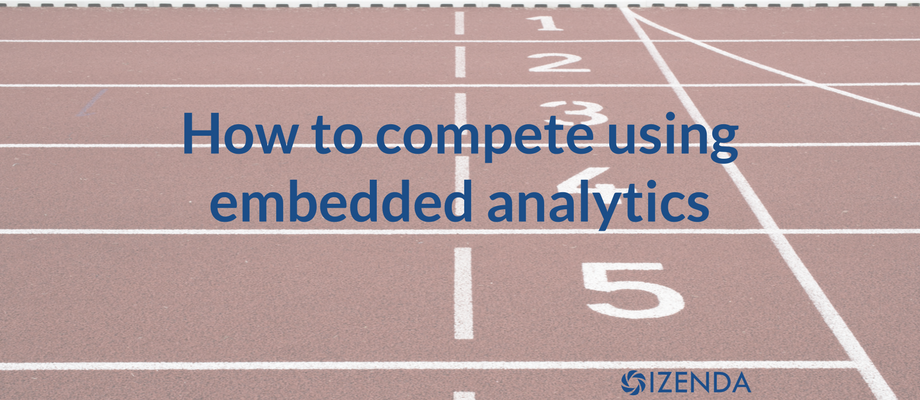
Since the government (and the public) frown on monopolies, competition becomes a way of life at every level of business. This pushes us to compete so that we can be successful. Analytics becomes a mainstay for organizations to understand the state of their companies through the data they collect. But how do software companies compete with analytics in the age of embedded analytics?
Software companies can use several key methods to compete with analytics:
- Improve a capability or external relationship
- Understand the business better to improve on actions
- Offer analytics with the core product
- Offer analytics as an added feature for the core product
Thomas Davenport and Jeanne G. Harris described the Five Stages of Analytical Maturity in their book, Competing on Analytics: The New Science of Winning. Today’s modern architectures of embedded analytics may let software companies move through these stages faster, as described below.
The Five Stages of Analytics
The first stage Davenport calls “Analytically Impaired” as the company’s data is inconsistent or of poor quality. Analytics still lacks executive support. Executives – indeed, anyone in a decision-making capacity – relies too much on gut instinct the tired old, “we’ve always done it that way” mantra.
The next stage he called “Localized Analytics,” as even with useful data, it is unavailable to other groups or teams and as it’s locked in departmental silos. The analysts directed to use this data work on different teams and are given disconnected business targets for analysis that may lack importance to the company.
Only at the third stage, “Analytical Applications”, does analytics rise to the functional level. In this stage, leadership backing drives a company-wide approach to analytics. Data access improves, allowing analysts to target a few key areas to concentrate their efforts.
Izenda helps position software companies and their customers solidly in Stage 3, “Analytical Aspirations.” And it quickly positions them in the fourth stage as “Analytical Companies.” Customers and end users see a distinct improvement in how fast they make decisions. As users and executive sponsors adopt the use of embedded analytics they’ll quickly move into the final stage as “Analytical Competitors.”
74% of top embedded analytics users saw an improvement in the speed of decision-making. (Source: Insight at your Point-of-Decision: Embedded BI Takes Center Stage, Aberdeen Group, December 2016)
Organizations that recognize the need for analytics already have moved away from the Analytically Impaired. They’re either following the lead of their customers who make analytics a requirement in their business applications, or they are leading their customers by providing reports on key metrics.
Izenda’s modern embedded analytics platform helps tear down the data and departmental silos. Our BI and analytics solution simplifies this by putting the tools in the hands of non-technical users to set up data access. Izenda can report against multiple databases.
A company without a mature analytics model, that’s just getting started in the third stage of analytical maturity can recognize value in the first two years of adopting a modern analytics solution. Without the data, the company lacked operational efficiency, as you can’t improve what you can’t measure. After those first years, business intelligence gets viewed as a cost because now the low hanging fruit has been picked for analysis.
Read our blog on How to Add Analytics to Your App with a BI Portal
With the right self-service analytics platform, companies can create more value because even line of business users have access to the data that fits their roles. This gives them the ability to gain insight by following up initial analysis to ask new questions. They don’t have to wait for IT to create the reports, dashboards and data visualizations that allow them to spot trends.
A software product team that chooses to embed a self-service analytics solution in the business application enables the company’s end users to ask those questions within the context of the business and its workflow.
The business software vendor that embeds self-service analytics reaps its own benefits by adding these features to its application. The application stands out among competitors’ offerings, which has a direct effect on the bottom line.

